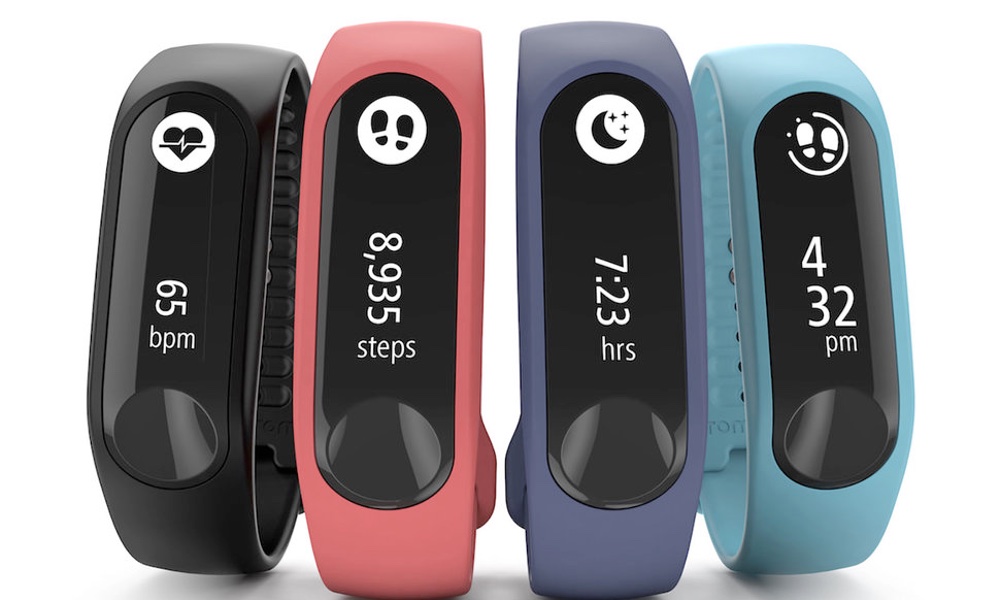At some point in our lives, many of us come to the realization that – gasp! – we aren’t ageless. For some, this unwelcome wakeup call may be triggered by a glance in the mirror, perhaps revealing the first signs of "crow’s feet," or laugh lines that are visible long after we stop laughing. Many women take good care of their skin from the time they are young, but others of us wait until the first signs of age propel us into action. This is when many people start the skincare research process — or at least the skin care product purchasing process.
If certain skincare products work, how do they work, and how can we figure out what is truly helpful from all the hype?
Protecting one’s skin from the sun is perhaps the single most important thing we can do to keep our skin youthful and healthy. But what about "anti-aging" emollients, scrubs, creams, and cleansers?
There are literally thousands of tempting options on the shelves these days for slowing the aging process. It seems like every other week there is a new ad for a cutting-edge product, promising to remove the signs of age and turn back the clock. To make matters worse for the consumer, some products come in diamond-encrusted packaging, cost hundreds of dollars, or use science-y-sounding (often made-up) words in their names.
To help us understand some of these issues, we talked to two well-known experts in the field. Melanie Grossman, MD is a board-certified dermatologist and Assistant Clinical Professor of Dermatology, College of Physicians and Surgeons of Columbia University. She is affiliated with New York-Presbyterian Hospital, and has a private practice in Manhattan. Monica Halem, MD is also a board-certified dermatologist in Manhattan and Assistant Clinical Professor of Dermatology at Columbia University.
First, let's look at the "architecture" of skin, and how the body’s largest organ functions in the first place, and then go on to consider whether it is possible to slow skin’s aging process with skin care products and if so, which ones (hint: they’re more likely found in the kitchen, not the bathroom cabinet).
Skin is a multitasking organ. That's right, it is an organ that needs to be fed and cared for like any other and serves a variety of important functions. Skin's most obvious role is as an infection-preventing barrier between the body and the outside environment. It regulates body temperature, water and electrolyte balance, houses the millions of nerve endings that give us our sense of touch, as well as our ability to detect pressure, respond to pain, and sense texture. The skin also synthesizes Vitamin D when the ultraviolet rays of the sun hit it, making it an important part of how the body creates and uses this essential vitamin.
Skin's most obvious role is as an infection-preventing barrier between the body and the outside environment. It regulates body temperature, water and electrolyte balance, houses the millions of nerve endings that give us our sense of touch, as well as our ability to detect pressure, respond to pain, and sense texture.
The epidermis acts as a barrier, protecting the body from foreign invaders (bacteria and viruses). The dermis houses all the important goodies, like many different kinds of nerve endings, sweat glands, blood vessels, oil glands, and hair follicles. It is made up of hardy yet flexible tissue, comprised of elastin, collagen, and fibrillin (some of which are frequently targeted with skin products). The fat layer, which naturally thins with age, lies beneath the outer two layers of skin and helps keep the body warm, serves as padding (some of us have more than others), and acts as an energy store.
As most of us notice, the skin changes a lot over time. Aside from the external factors (like sun and smoke) that damage skin, there are other, natural changes that would occur even if we never set foot (or face) in the sun. These changes can begin as early as one’s twenties, though they may not be obvious till much later.
New skin cells don’t replace the old ones as rapidly as they once did as we age, and it is this which can also contribute to the duller look of age.
Skin naturally becomes thinner as we age, as it loses its underlying fat layer. The amount of oil the skin produces also decreases with age, and can make skin drier. As we age the elastic fibers in skin, like collagen and elastin, are not produced as quickly, which can cause skin to lose some of its bounce. It's also true that new skin cells don’t replace the old ones as rapidly as they once did as we age, and it is this which can also contribute to the duller look of age. Of course, gravity also plays a role in the aging process, as it causes all body parts, face included, to sag a little more.
The simple act of resting one’s head on the pillow can, over the years, lead to "sleep lines," or wrinkles that don’t go away after you get up. All of these factors, internal and external, can lead to the appearance aged skin, and while we can't prevent the passing of time, there are some simple things we can do to help our skin stay a little softer and look a little fresher.
While the many of products out there may not be worth their salt, some products can actually help skin retain its youth longer. There are certain ingredients that one should target when choosing skincare products: ingredients that work with skin’s biological processes. While no product will be a facelift in a jar, here are some cosmetics, according to the experts, that may help decrease the appearance of wrinkles, protect the skin, and maybe even take a couple of years off.
Just because it says "clinically proven" on the package, does not mean that it has stood up to rigorous scientific testing.
Dr. Grossman brings up an interesting distinction, and one that is important to remember when thinking about any kind of skincare treatment. Just because a product is "proven" in a lab, it doesn’t mean that it is proven in skin. She points out that "there are products that have been proven in the test tube, but we’re making a leap to whether they work in the skin. There are lots of newer ingredients, from antioxidants and peptides to growth factors and ‘DNA repair’ enzymes. All of these things may be proven in test tube, but they may not have been shown to make biological changes in the skin. Does it go from test tube to topical? That’s the real question."
While it’s not always possible for consumers to access the scientific studies that show whether products have been tested in humans or not, your dermatologist can help you determine which products are likely to work on your skin.
Dr. Grossman believes her skin is in better shape than it might otherwise be for having used sunscreen for the last 30 years. Dr. Halem also doesn’t leave home without it, stressing that the rays that damage your skin are present all the time, even on overcast days: "They come through the clouds, through the windows. You don’t even know you’re being hit. I always recommend SPF 30 or higher." A broadband sunscreen with both UVA and UVB protection should be used on your body. For your face, choose a sunscreen that is noncomedogenic — especially formulated not to clog pores.
Dr. Grossman acknowledges that there is controversy regarding vitamin D depletion with the use of sunscreen. She suggests monitoring vitamin D levels with your doctor. If levels are found to be low, he or she can suggest the right type of supplement. In general, the experts agree that protecting your skin from the sun is one of the best things we can do for our skin.
- Alpha hydroxy acids
- Azelaic acid,
- Certain (but not all) growth factors
- Hydroquinone
- Kojic acid
- Peptides (some but not all)
Dr. Halem recommends the alpha hydroxy acids (AHAs), which include salicylic, lactic, and glycolic acids, and have been shown to be effective in research studies. She uses them herself and has been impressed by the results. She also recommends vitamin C, a powerful antioxidant that has been shown to help the appearance of skin, and is an ingredient in some topical skincare products. She adds that some evidence is beginning to mount that growth factors may be beneficial (they could be the next big thing, she says), but it’s still too early to tell.
The rays that damage your skin are present all the time, even on overcast days: 'They come through the clouds, through the windows. You don’t even know you’re being hit. I always recommend SPF 30 or higher.'
The AAD points out that just because it says "clinically proven" on the package, does not mean that it has stood up to rigorous scientific testing. Some "clinical" tests are conducted by the very companies that make the product: they might give the product to volunteers for a few weeks and then ask them to rate whether the product helped their skin or not. This is not in any way a rigorous, unbiased, scientific test. So don’t be sucked in to these types of promotions.
And finally, as the AAD warns, just because it’s expensive does not mean it works! For example, moisturizer can be an important part of a basic skincare routine, as it adds hydration to skin and helps protect against the loss of moisture. But the most expensive parts of moisturizer are the fragrance and packaging, not the moisturizer itself. Some of the best moisturizers are very inexpensive and can do a lot for the complexion.
In fact, in many of the products that promise younger, brighter looking skin in short amounts of time, the secret ingredient is not some exotic anti-aging serum: it’s moisturizer. So be a discerning consumer when it comes to skincare products, and again, talk to a dermatologist if you have any questions about the effectiveness of specific ingredients.
FDA does not have to regulate what ingredients are used in cosmetics, with the exception of a few compounds that are prohibited. Parabens are used as preservatives in cosmetics to protect against microorganisms and prevent the products from degrading.
The FDA’s stance on parabens is that they are safe in cosmetics in levels lower than 25% – most products use far less than this – 0.01-0.3%. Parabens weakly mimic the effects of estrogen, which is linked to a higher risk for breast cancer. However, studies have shown that the parabens are 10,000-100,000 times weaker than naturally-occurring estrogens in the body. As a result, the FDA continues to certify parabens safe for cosmetic use, though they are keeping an eye on the research as it unfolds.
Phthalates are another class of chemicals used in cosmetics, shampoo, and lotions (not to mention plastics , vinyl flooring, and adhesives) that have gotten attention recently. Some studies have linked certain phthalates to increased breast density, which is a known marker for breast cancer, though there’s no evidence that phthalates are actually linked breast cancer. Phthalate exposure during pregnancy may be related to hormone problems during development and to behavioral problems in children, but the evidence is inconclusive, so phthalate use in cosmetics remains unrestricted.
The bottom line is that the research on these questionable cosmetic ingredients is inconclusive. Some products advertise that they do not include parabens, phthalates, or other compounds that have raised questions in the past, so if you’re concerned stick with these products. And as always, you should talk to your dermatologist about product safety, since he or she can give you an educated opinion on specific ingredients.
Taking care of your skin from the inside out is at least as important as using products that work from the outside in. What we eat affects our organs, metabolism, brains, and, not surprisingly, the health of our skin. Eating foods rich in antioxidants like blueberries, strawberries, blackberries, apples, oranges, grape, and dark leafy greens helps repair all the cells of our bodies, skin included.
Antioxidants work by attacking free radicals, damaging compounds formed when oxygen interacts with certain molecules. Once formed, these highly reactive radicals can start a chain reaction, like dominoes. If they manage to damage important parts of cells such as DNA, or the cell membrane, they can destroy (and prematurely age) our cells. This cellular damage is a common pathway for cancer, aging and a number of diseases.
Because skin comes into contact with so many harmful compounds (sun, smoke, air pollutants, and harsh cleaning chemicals) that can generate free radicals, it is especially important to eat foods that will help repair damage.
Antioxidants scavenge for free radicals. They attach themselves to these unstable compounds and prevent them from damaging cells by making them less reactive. Because skin comes into contact with so many harmful compounds (sun, smoke, air pollutants, and harsh cleaning chemicals) that can generate free radicals, it is especially important to eat foods that will help repair damage.
Vitamins C and E act as antioxidants, helping repair the cell damage that comes from free radicals. Vitamin C is found in citrus fruits, berries, and almost any kind of vegetable. Vitamin E is abundant in wheat germ oil, as well as in nuts and seeds. Eating foods rich in these nutrients may be helpful in keeping skin at its healthiest.
Green tea may also be beneficial to skin cells. It contains high levels of polyphenols, plant-derived compounds that act as powerful antioxidants. Green tea has been shown to protect the skin from skin cancer by boosting its natural DNA repair mechanisms. (Some cosmetics also contain green tea extract.) Tea is beneficial for another reason. When the body is dehydrated, skin becomes dehydrated, too, and loses some of its resilience.
You can give your body retinol, a relative of the product mentioned earlier, tretinoin, by eating foods that are rich in vitamin A. This is because different forms of vitamin A, such as carotenoids, can be converted to retinol. Generally, orange vegetables (like carrots and cantaloupe) and dark green ones (spinach and kale) are the best sources of carotenoids like beta-carotene, which is most easily converted to retinol.
Water makes up more than 2/3 of our body weight, and serves a variety of purposes, including flushing toxins out of the body and shuttling nutrients to their destinations. Because we lose so much water in urine, sweat, fecal matter, and even respiration, it is important to replenish it. When the body is dehydrated, the skin becomes dehydrated. And when skin lacks moisture, it loses a bit of its resilience, so that wrinkles may become more obvious.
One of the easiest ways to check for dehydration is to pinch the skin. If it quickly bounces back and returns to its smooth state, it has enough water. If the pinched skin remains noticeable for a few moments, you are dehydrated. When that happens, wrinkles may become more likely and more obvious. Keeping well-hydrated keeps the entire body healthy, and the skin looking livelier and plumper (in a good way). Drinking adequate amounts of water – about eight 8-oz glasses a day, or more, if you’re active – is a key to dewy skin.
Skin care products can help reduce the signs of age, but let’s face it, they’re not going to reverse the clock. The FDA-approved retinoids are most likely the best way to slow the aging process. There may also be other products that help, but the jury is still out on whether they actually work in living skin cells.
Dr. Grossman recommends having a balanced attitude towards skin care. Again, she says that products with sunscreen are often a good bet, since the sun is a major culprit in skin’s aging process and says that when it comes down to it, the advice your mother gave you is probably pretty accurate: have a healthy, balanced diet, get enough sleep, exercise, and drink plenty of water. And, as much as possible, reduce stress! Dr. Grossman says, "the most important thing is to pay attention to your own skin and take care of it like you take care of the rest of your body. Protect it from the environment."
Skin looks best when it’s healthy. There’s no make-up or age-defying potion that’s going to hide the dehydrated, damaged, or poorly-nourished skin. The best way to keep skin looking its best is to keep it simple. Use some basic moisturizer, sunscreen, and a little retinoid or retinol if you want. Otherwise, feed it, water it, and protect it, to keep it healthy and happy for many years to come.




